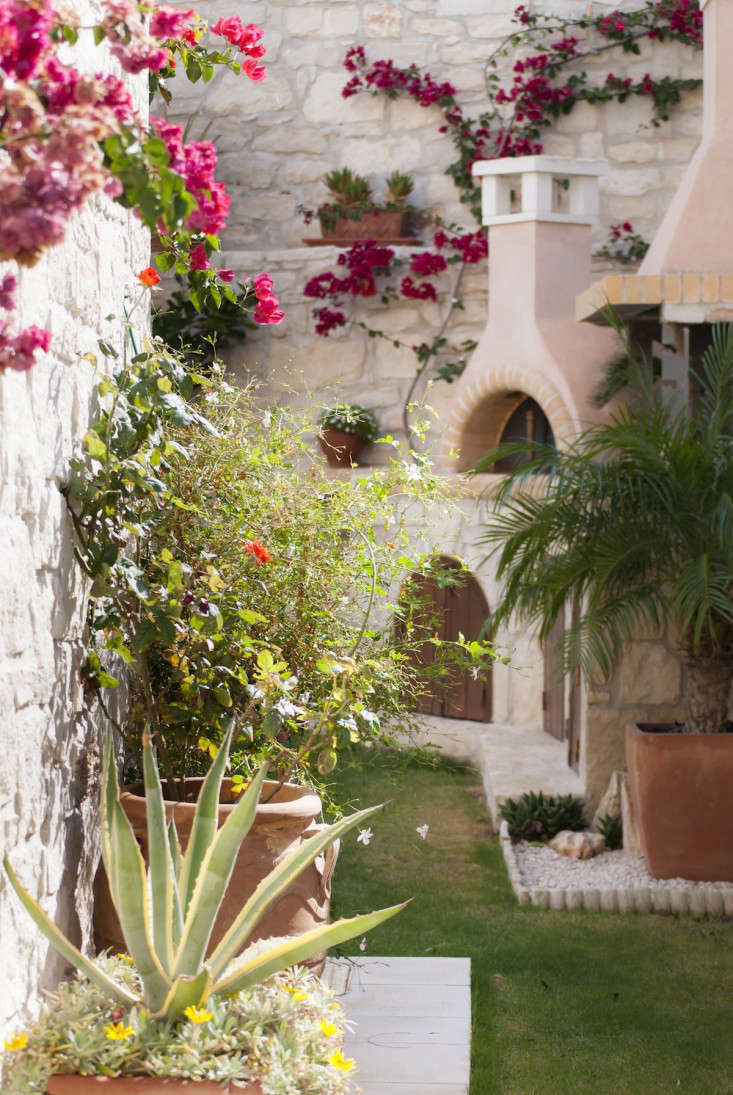Crete, the largest of the Greek islands, is not only a haven for its rich history, stunning landscapes, and warm Mediterranean climate, but also for gardening enthusiasts. The island’s unique climate and fertile soil offer perfect conditions for cultivating a Mediterranean paradise right in your backyard. Whether you are a seasoned gardener or a novice, this guide will help you harness the beauty of Crete’s natural environment to create a flourishing garden.
Understanding the Climate and Soil
Mediterranean Climate: Crete enjoys a classic Mediterranean climate characterized by hot, dry summers and mild, wet winters. Understanding these seasonal variations is crucial for successful gardening. The long growing season and ample sunshine provide excellent conditions for a wide variety of plants, from aromatic herbs and vibrant flowers to productive fruit trees and vegetables.
Soil Conditions: The soil in Crete varies from sandy to clayey, often rich in minerals but sometimes low in organic matter. It’s essential to test your soil’s pH and nutrient levels to understand its composition. Most Mediterranean plants prefer well-drained soil with a neutral to slightly alkaline pH.
Improving Soil Quality: Amending your soil with organic matter such as compost or aged manure can improve its structure, fertility, and moisture retention. Mulching with organic materials helps retain soil moisture, suppress weeds, and add nutrients as it decomposes.
Choosing the Right Plants
Native and Drought-Tolerant Plants: Selecting native and drought-tolerant plants is key to a sustainable and low-maintenance garden. These plants are adapted to Crete’s climate and soil, requiring less water and care.
- Aromatic Herbs: Herbs like rosemary, thyme, sage, oregano, and lavender thrive in Crete’s climate. These herbs not only add flavor to your cooking but also attract beneficial insects to your garden.
- Flowers: Bougainvillea, geraniums, oleander, and hibiscus are popular flowering plants that add vibrant colors to your garden. They are well-suited to the Mediterranean climate and can endure the summer heat.
- Fruit Trees: Olive, fig, pomegranate, and citrus trees are staples in Cretan gardens. These trees are well-adapted to the local conditions and can provide a bountiful harvest.
- Vegetables: Tomatoes, peppers, eggplants, zucchini, and cucumbers are commonly grown vegetables that thrive in the warm, sunny conditions. Leafy greens such as spinach and lettuce can be grown during the cooler months.
Watering and Irrigation
Efficient Watering: Water conservation is crucial in a Mediterranean garden due to the long, dry summers. Implementing efficient watering techniques ensures your plants get the moisture they need without wasting water.
- Drip Irrigation: Drip irrigation systems deliver water directly to the roots, reducing evaporation and ensuring efficient water use. This method is ideal for vegetable gardens and flower beds.
- Mulching: Applying a thick layer of mulch around your plants helps retain soil moisture, reduce evaporation, and keep the soil cool.
- Watering Schedule: Water your plants early in the morning or late in the evening to minimize evaporation. Established plants and drought-tolerant species may require less frequent watering.
Garden Design and Layout
Creating Microclimates: Design your garden to take advantage of different microclimates within your property. Use structures, such as pergolas, trellises, and walls, to provide shade and protect sensitive plants from strong winds.
- Terracing: If you have a sloped garden, consider terracing to prevent soil erosion and create level planting areas. Terraces can also help in water conservation by directing runoff to where it’s needed most.
- Companion Planting: Planting complementary species together can enhance growth and deter pests. For example, growing basil near tomatoes can improve their flavor and repel insects.
Incorporating Hardscapes: Add pathways, patios, and seating areas to create an inviting and functional outdoor space. Use local materials like stone and terracotta to blend with the natural surroundings and maintain a Mediterranean aesthetic.
- Water Features: A small fountain or pond can add a cooling element and attract wildlife to your garden. Ensure the water feature is well-maintained to prevent mosquito breeding.
- Pergolas and Arbors: These structures provide shade and support climbing plants like grapes and wisteria, creating a lush, green canopy.
Maintaining Your Garden
Regular Pruning: Prune your plants regularly to encourage healthy growth, remove dead or diseased branches, and maintain their shape. Pruning also helps increase air circulation and sunlight penetration.
Pest and Disease Management: Monitor your garden for signs of pests and diseases. Use organic and eco-friendly methods to control pests, such as introducing beneficial insects, using natural repellents, and practicing crop rotation.
Seasonal Care: Adapt your gardening practices to the seasons. In winter, protect sensitive plants from frost by covering them or moving them indoors. During the hot summer months, ensure your plants are adequately watered and mulched to retain moisture.
Conclusion
Gardening in Crete allows you to create a beautiful and productive Mediterranean paradise, taking full advantage of the island’s favorable climate and fertile soil. By choosing the right plants, implementing efficient watering techniques, and designing your garden thoughtfully, you can enjoy a lush, vibrant outdoor space that reflects the natural beauty of Crete. Embrace the joys of Mediterranean gardening and cultivate a sanctuary that nourishes both body and soul.


